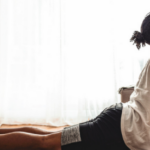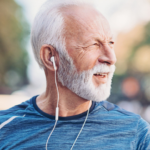There is an old saying that goes something like this: ‘Often, the hardest part of going for a run is putting your sneakers on.’
Meaning, the barriers to exercising (or physical activity) are sometimes harder than the physical act of exercising itself.
Despite these benefits, many people still find it hard to commit to regular physical activity.
According to Better Health Victoria, the most common reasons given by men for not being physically active are: insufficient time because of work or study commitments, lack of interest, age (‘I’m too old’) and ongoing injuries or illness.
People living with a disability or health condition can face even more barriers.
But before we go any further, we first should understand more about disability and chronic conditions.
What is disability?
In Australia, one in six people (about 4.4 million Australians) are estimated to have a disability.
Healthy Male describes disability as “the interaction between individuals with a health condition (such as vision impairment, mental illness, or cerebral palsy) with personal factors (such as age or sex) and environmental factors (such as community attitudes and accessibility of services).
“Disability is not simply having a certain impairment that’s disabling, but how the impairment interacts with barriers to participating in everyday life. These can include anything from a lack of wheelchair accessibility in a workplace to minimal representation of people with a disability in the media, stereotyping by society, to systemic discrimination.”
What are chronic conditions?
Many people live with chronic conditions, which are the leading cause of illness, disability and death in Australia.
Examples of chronic conditions include arthritis, asthma, cardiovascular disease, cancer, eye conditions, diabetes, kidney disease, musculoskeletal conditions and mental health conditions.
There is sometimes some crossover between disabilities and chronic conditions — chronic conditions can cause disability if they limit daily function and persist (or are expected to do so) for six months or more.
However, chronic conditions don’t always lead to disability because they may not limit daily activity if they are well managed.
Disability, meanwhile, can be caused by chronic conditions but can also be caused by other things like genetics or developmental problems. People with disability, though, are more likely than others to have chronic conditions.
Barriers faced by people with a disability or chronic condition
Just like anyone, people with a disability or chronic condition can sometimes struggle to commit to physical activity or exercise due to a lack of time, interest, or money to pursue certain activities.
However, additional barriers may also be difficult to overcome, and the Australian Institute of Health and Welfare (AIHW) found almost three-quarters of people aged 15 and over with disability do not do enough physical activity.
This compares with about half of those without disability.
The AIHW also found that 83 per cent of older adults with a disability (aged 65 and over) do not do enough physical activity, compared with 62 per cent of older people without a disability.
Exercise & Sports Science Australia (ESSA) Health and Exercise Integration Officer Brent Nicol says disabled or ill people sometimes faced greater challenges regarding exercise.
“People living with a disability are less likely to take part in regular physical activity than people without disability, yet they have similar needs when it comes to improving their health and preventing unnecessary chronic conditions,”
– Brent Nicol, Exercise & Sports Science Australia (ESSA) Health and Exercise Integration Officer
“Disability should not exclude someone from participation in appropriate sports and physical activity.
“Exercise is for everyone, (but) for some people with a disability, physical activity can be a challenge. This can be due to mobility issues or a lack of accessible and inclusive gyms and other exercise spaces. Others simply don’t know where to start.
“In addition to these, we’re often talking about stigma and ableism (external or internalised), discrimination, lack of safe spaces, finding access to the right supports, finding educated and caring professionals who are willing to work with you.”
How to get started
There’s no doubt overcoming these barriers can be rewarding, but it can be daunting to get the ball rolling.
There are ways to make the journey easier, however.
The Australian Government Department of Health and Aged Care states “Any activity is better than none, but it’s important to do activities that are appropriate to your ability.
“For guidance on activities that are suitable for you, a qualified health professional such as an exercise physiologist, personal trainer or other appropriately trained health professional is recommended.
“You may be able to access these services through a government-funded scheme such as the National Disability Insurance Scheme (NDIS).
“There are also many sporting opportunities in Australia for people with disability — these range from competitive, elite athlete programs, to community sports and recreation. Information about what is available in your local state or territory can be found on the Disability Gateway.”
Nicol also has some practical tips. He says an important first step is discussing your situation with a professional.
“If you are living with a disability but do no physical activity right now, start by doing some, then slowly build up to the recommended amount prescribed by an accredited exercise professional,”
– Brent Nicol, Exercise & Sports Science Australia (ESSA) Health and Exercise Integration Officer
“Ask for help. It’s always good to get advice from your GP and an accredited exercise professional to understand what exercises are safe for you and your ability.
“Don’t focus on what you can’t do — get creative and find opportunities to increase physical activity in ways that meet your needs and abilities.
“Don’t compare yourself to others — we’re all different and have different strengths. Listen to your body and do what’s right for you, not what others are doing.
“And do something you enjoy. Exercise shouldn’t be boring! Try a mix of different activities and focus on the things that you enjoy.
“Find support. Getting a friend or family member involved in your exercise journey can help to keep you accountable and stick to a regular routine.
“Remember, some movement is better than none at all! Every little bit counts.”














